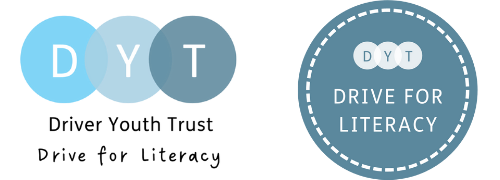Grammar schools will mean a further separation of the most vulnerable pupils from the best teachers
13/12/2016
The Driver Youth Trust submitted evidence to the Government’s “Schools that work for everyone” consultation yesterday, read our full response.
DYT cannot support the proposals in “Schools that work for everyone.” The document neither addresses the risks of the proposals to SEND learners, nor does it articulate any benefit for them – in fact they are not mentioned once in the document.
Key points:
Grammar Schools
- There is “no benefit” of the return of selective education to learners with Special Educational Needs & Disabilities (SEND) according to The Driver Youth Trust’s submitted evidence to the “Schools that work for everyone” consultation.
- 1 in 7 pupils in our schools have a SEND, yet, the proposals fail to mention SEND once despite this figure. There is a worrying trend that SEND learners are being forgotten about altogether by policy-makers. There are many people with SEND who are highly able (Maggie Aderin-Pocock MBE, Richard Branson and Darcey Bussell are all dyslexic) but the assessment process used to admit learners to grammar schools is like
 ly not to champion knowledge but rather the aptitude to read and write quickly under test conditions.
ly not to champion knowledge but rather the aptitude to read and write quickly under test conditions. - Less than 0.04% of Statemented SEND learners attend grammar schools, compared to 1.7% across all schools. The percentage of SEND learners, with needs not sufficient to receive a Statement of Special Educational Need or an Educational Health Care Plan – for example dyslexics – is 3.6% in grammar schools, compared to 11% nationally.
- SEND Learners deserve and require the best teaching by skilled and knowledgeable teachers and support staff. Grammar schools attract and retain the most experienced teachers, this could lead to a further separation of the most vulnerable pupils from the best teachers
- The link between poverty and SEND remains ignored. The Government’s focus is on improving education for the group of people who are ‘Just About Managing’ (JAM) and for those eligible for Free School Meals (FSM), it is estimated that a third of that cohort will have a SEND. Furthermore, we challenge the mantra that grammar schools are effective instruments of social mobility. The percentage of students eligible for FSMs who attend grammar schools is 2.6%, compared to 14.1% across all schools and we do not see any specific details in the proposals to suggest this will change.
Faith Schools
- We believe that the plan to boost the number of faith school places by reforming the rules around prohibitive admissions that new and existing faith schools can set is unlikely to boost social mobility.
- Furthermore, at both primary and secondary level, faith schools tend to admit fewer pupils from disadvantaged backgrounds and fewer learners with SEND. On average, Faith schools tend to be less representative of their local area at both primary and secondary level, regarding the number of pupils eligible for FSMs.
Independent Schools
- We recognise the benefit, in terms of school improvement, of schools working together. There are independent schools with significant knowledge and expertise in teaching SEND learners, those with dyslexia for example, and we would encourage these schools to share their expertise more widely.
- We recommend that the sharing of expertise, time and facilities between maintained and independent schools is explored within the context of building sustainable two-way relationships focused on the improvement of teaching SEND learners.
Universities
- Universities themselves should look into how they support and teach SEND students. The experience of SEND undergraduates can vary drastically depending on the level of specialist provision an individual institution has to offer.
- As teaching becomes an ever-more research-led and informed profession, we recommend that leading universities are encouraged to expand their work, in terms of teacher education, educational research and in disseminating knowledge beyond the confines of academia.
We recommend that SEND is at the heart of the ambition of creating schools that work for everyone.
